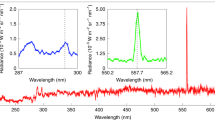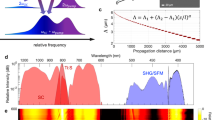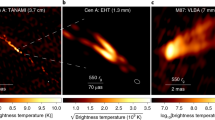Abstract
WE know that considerable interest is attached to certain auroral lines in the region 6300–6400 A. Thus the enhancement of one or more of these lines is responsible for a particular type of red-coloured auroræ1,3 and, according to the interpretation of the strong green line by McLennan and his collaborators, the OI-triplet (1D2 – 3P0,1,2) should appear in this region.
This is a preview of subscription content, access via your institution
Access options
Subscribe to this journal
Receive 51 print issues and online access
$199.00 per year
only $3.90 per issue
Buy this article
- Purchase on Springer Link
- Instant access to full article PDF
Prices may be subject to local taxes which are calculated during checkout
Similar content being viewed by others
References
L. Vegard, NATURE, 117, 356; 1926.
L. Vegard, Geophys. Publ., 9, No. 11; 1932.
L. Vegard, Z. Phys., 75, 30; 1932.
L. Vegard, Geophys. Publ., 10, No. 4; 1933.
L. Vegard and L. Harang, Geophys. Publ., 10, No. 5; 1933.
L. Vegard and L. Harang, Geophys. Publ., 11, No. 1; 1934.
J. J. Hopfield, Phys. Rev., 37, 160; 1931.
Author information
Authors and Affiliations
Rights and permissions
About this article
Cite this article
HARANG, L., VEGARD, L. Interferometer Measurements of the Red Auroral Line 6300. Nature 135, 542–543 (1935). https://doi.org/10.1038/135542b0
Issue Date:
DOI: https://doi.org/10.1038/135542b0
Comments
By submitting a comment you agree to abide by our Terms and Community Guidelines. If you find something abusive or that does not comply with our terms or guidelines please flag it as inappropriate.



